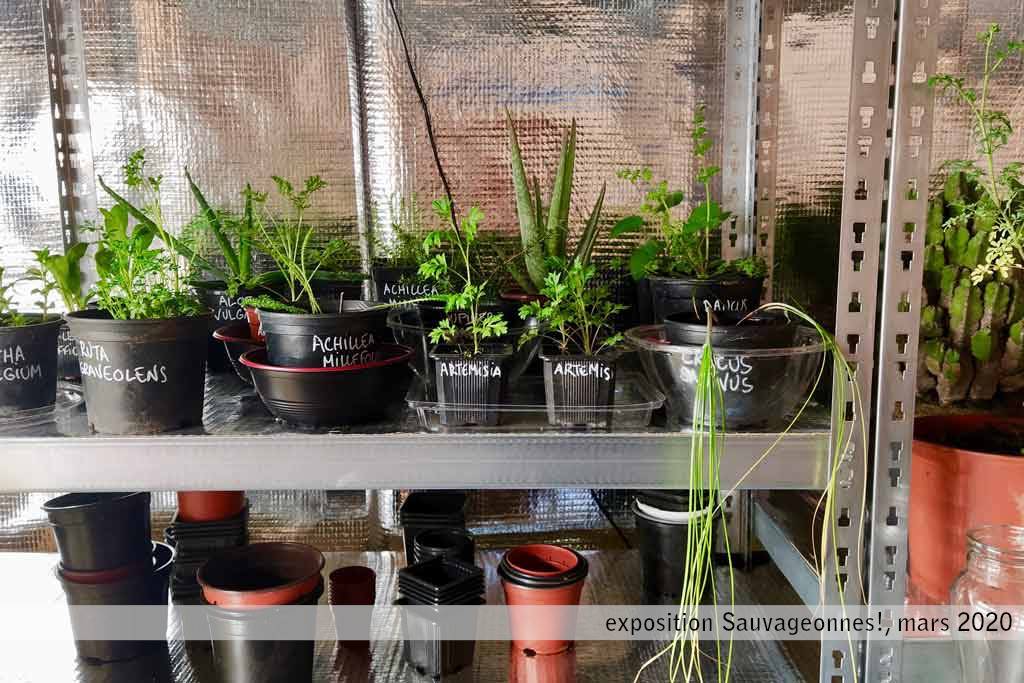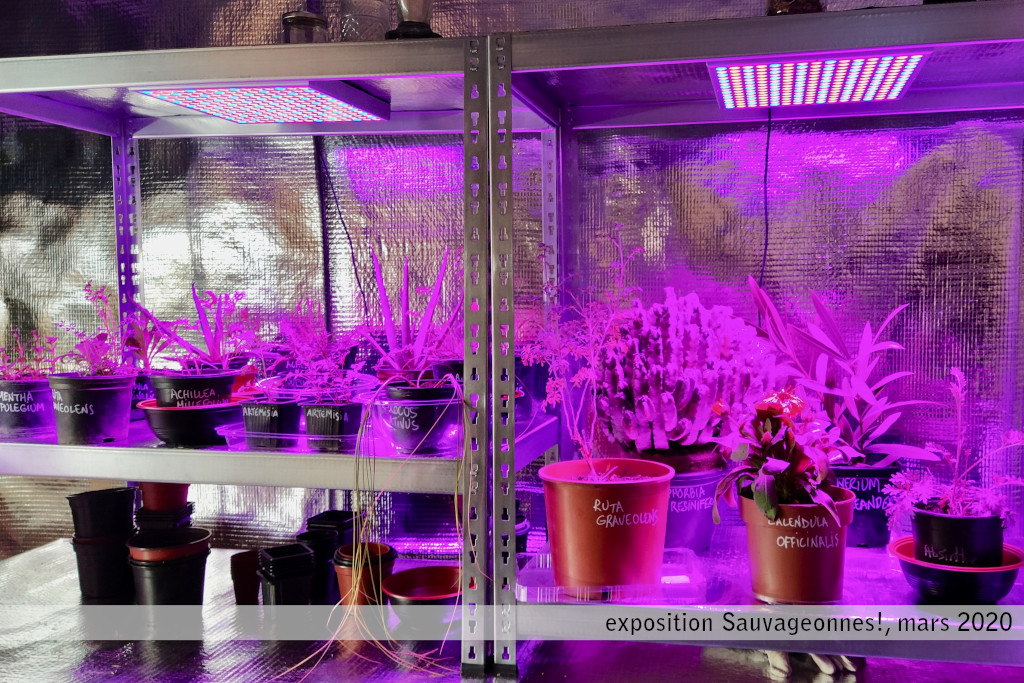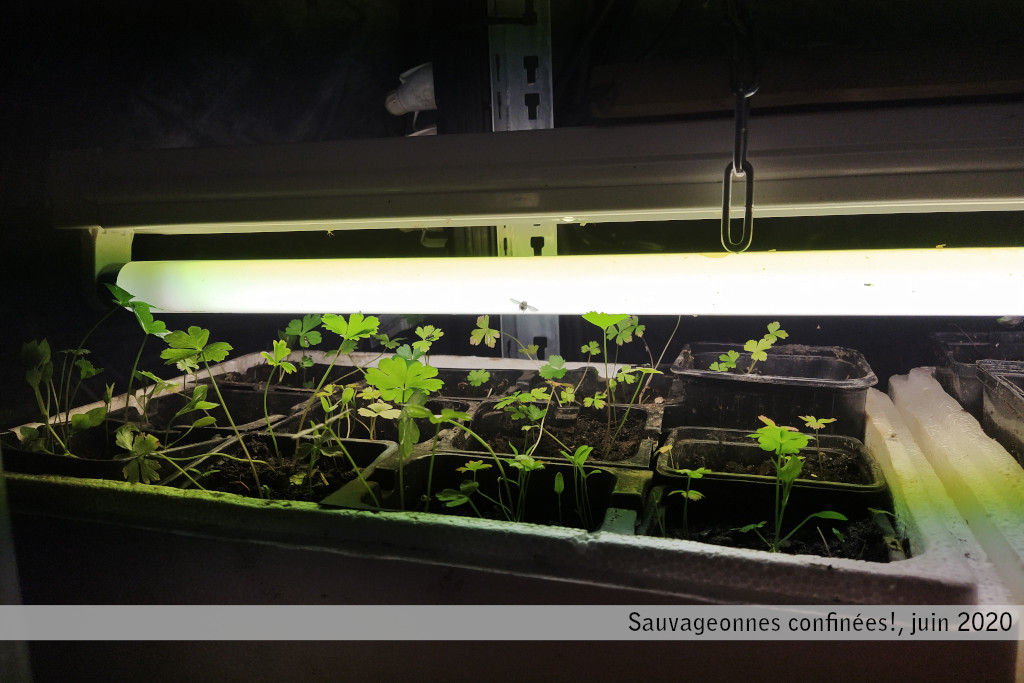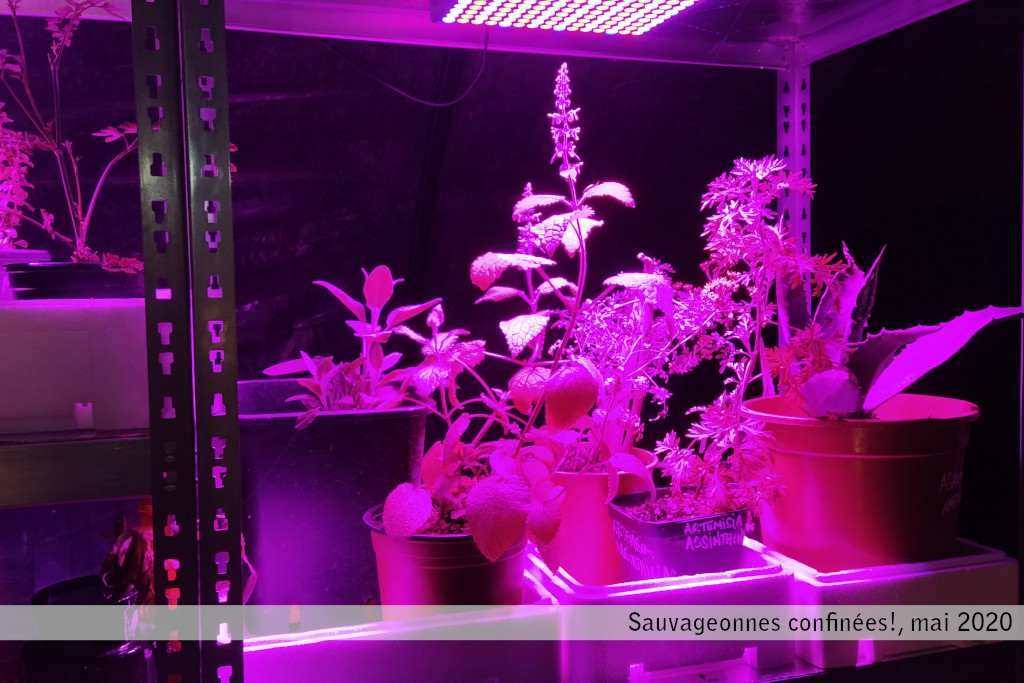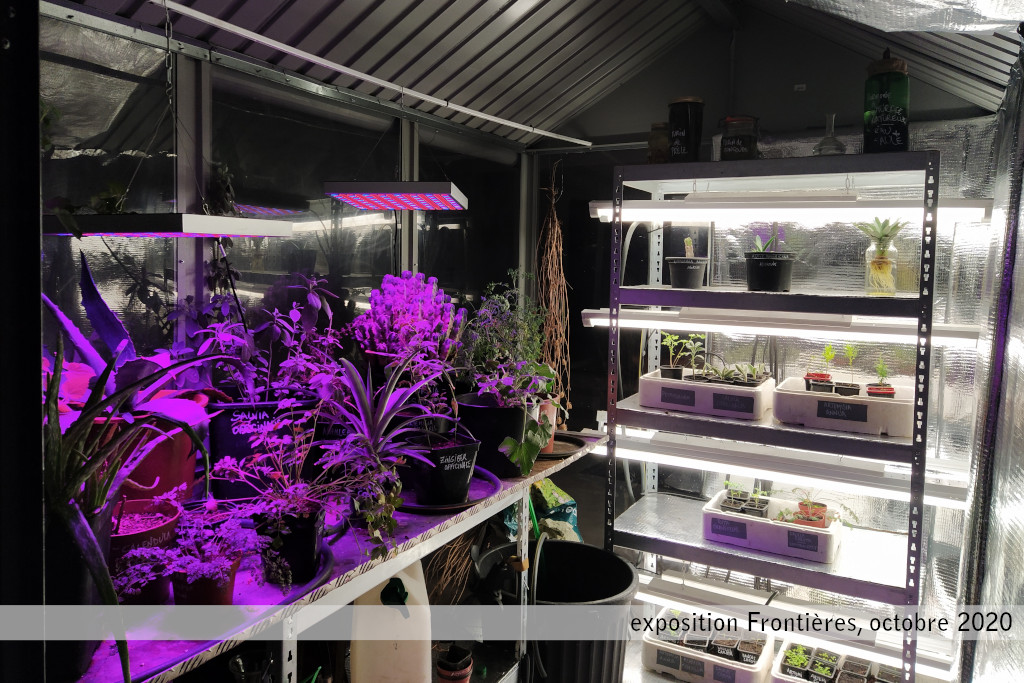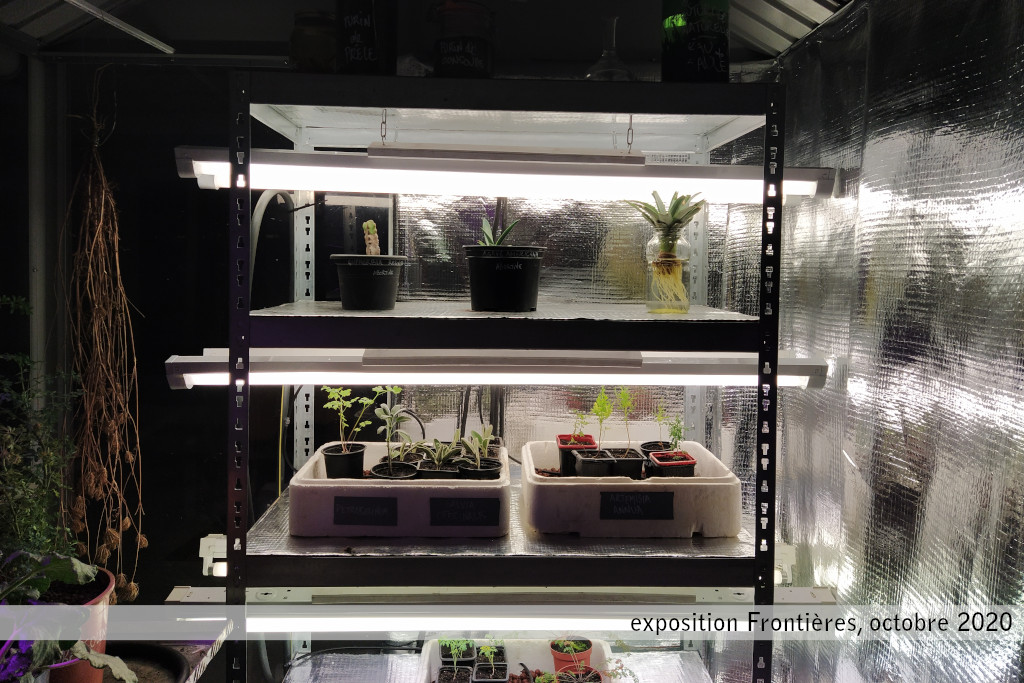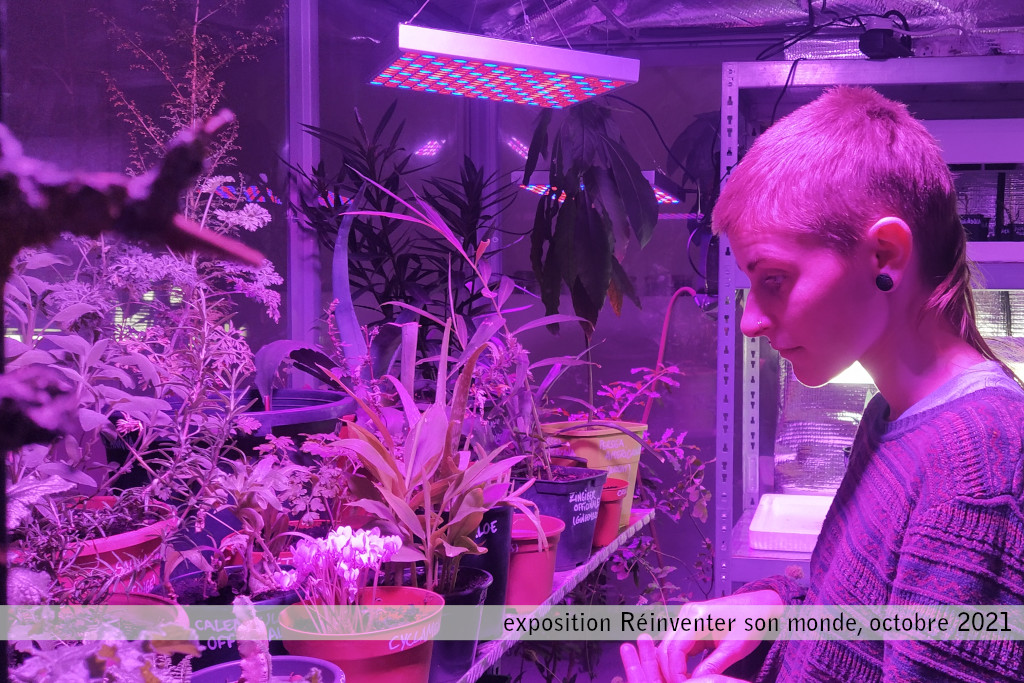Fr
Plants, cuttings and seedlings, greenhouse, shelves, neon lights, horticultural leds, polystyrene tubs salvaged from fishmongers, gardening tools, watering system, electronic board, sensors, pots, clay ball, potting soil, cans.
The 8 m³ greenhouse is divided into two areas:
– one dedicated to growing plants, lit by horticultural leds
– one dedicated to vegetative propagation: seedlings, cuttings, stump division, neon-lit mother plants.
It’s an ecosystem that evolves throughout the exhibition.
The moss-covered floor invites visitors to take off their shoes before entering the greenhouse, connecting them to the plant kingdom via the arch of the foot.
Companion species, pollinating or parasitic insects, and sometimes even a fungal disease, invite themselves into this confined space. So, in addition to the plants on the shelves, there are cans filled with various fungicide, insecticide and stimulant purins, such as nettle purin, comfrey purin, horsetail or garlic decoctions, and diluted black soap, ready for spraying. There’s also a maceration of willow branches in water, which acts as a natural cuttings hormone and helps cuttings take root.
>>>>>>>>>>>>>>>>>>>>>>>>>>>Computer Programming
To provide the right environment for abortifacient and contraceptive plants to flourish, an Arduino board uses a computer program and sensors to measure variations in various factors: air and soil humidity, temperature and brightness.
Then, using actuators, the Arduino board regulates and manages: watering, heating, ventilation, duration and type of light, to provide plants with the ideal climatic conditions for their growth:
– if the greenhouse temperature is below 18°C >> the system triggers electric heating.
– if the temperature is above 24°C >> the system activates ventilation
– if air humidity is below 60% >> the system activates the misting system.
– if soil humidity is below 50% >> the system activates the sprinkler system
– if the watering tank is empty >> the water level sensor detects this >> the system informs us via an e-mail alert.
– the duration of natural sunlight is reproduced, using horticultural Leds >> the time of daylight varies weekly, over the seasons, according to the solar calendar.
Back to A[r]bor[e]tum
